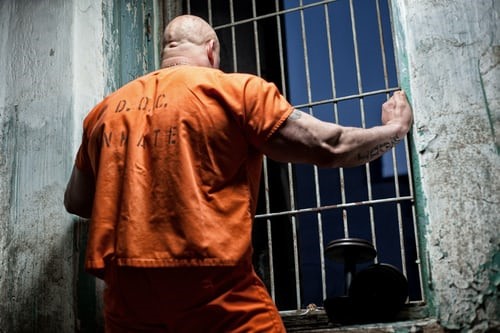How Do Conjugal Visits Work?

Maintaining close ties with loved ones while doing time can increase the chances of a successful reentry program. Although several studies back this conclusion, it’s widely logical.
While the conjugal visits concept sounds commendable, there’s an increasing call to scrap the scheme, particularly across US states. This campaign has frustrated many states out of the program, leaving only a handful. Back in 1993, 17 US states recognized conjugal visits. Today, in 2020, only four do.
The conjugal visit was first practiced in Mississippi. The state, then, brought in prostitutes for inmates. The program continued until 2014. The scrap provoked massive protests from different right groups and prisoners’ families. The protesters sought a continuance of the program, which they said had so far helped sustain family bonds and inmate’s general attitude to life-after-jail.
New Mexico, the last to scrap the concept, did so after a convicted murderer impregnated four different women in prison. If these visits look as cool as many theories postulate, why the anti-conjugal-visit campaigns in countries like the US?
This article provides an in-depth guide on how conjugal visits work, states that allow conjugal visits, its historical background, arguments for and against the scheme, and what a conjugal visit entails in reality.
What Is a Conjugal Visit?
A conjugal visit is a popular practice that allows inmates to spend time alone with their loved one(s), particularly a significant other, while incarcerated. By implication, and candidly, conjugal visits afford prisoners an opportunity to, among other things, engage their significant other sexually.
However, in actual content, such visits go beyond just sex. Most eligible prisoners do not even consider intimacy during such visits. In many cases, it’s all about ‘hosting’ family members and sustaining family bonds while they serve time. In fact, in some jurisdictions, New York, for example, spouses are not involved in more than half of such visits. But how did it all start?

History of Conjugal Visits
Conjugal visits origin dates back to the early 20th century, in the then Parchman Farm – presently, Mississippi State Penitentiary. Back then, ‘qualified’ male prisoners were allowed to enjoy intimacy with prostitutes, primarily as a reward for hard work.
While underperforming prisoners were beaten, the well-behaved were rewarded in different forms, including a sex worker’s company. On their off-days, Sunday, a vehicle-load of women were brought into the facility and offered to the best behaved. The policy was soon reviewed, substituting prostitutes for inmates’ wives or girlfriends, as they wished.
The handwork-for-sex concept recorded tremendous success, and over time, about a quarter of the entire US states had introduced the practice. In no time, many other countries copied the initiative for their prisons.
Although the United States is gradually phasing out conjugal visits, the practice still holds in many countries. In Canada, for instance, “extended family visits” – a newly branded phrase for conjugal visits – permits prisoners up to 72 hours alone with their loved ones, once in few months. Close family ties and, in a few cases, friends are allowed to time alone with a prisoner. Items, like foods, used during the visit are provided by the visitors or the host – the inmate.
Over to Asia, Saudi Arabia is, arguably, one of the most generous countries when it comes to conjugal visits. Over there, inmates are allowed intimacy once monthly. Convicts with multiple wives get access to all their wives – one wife, monthly. Even more, the government foots traveling experiences for the visitors.
Conjugal visits do not exist in Great Britain. However, in some instances, prisoners incarcerated for a long period may qualify to embark on a ‘family leave’ for a short duration. This is applicable mainly for inmates whose records suggest a low risk of committing crimes outside the facility.
This practice is designed to reconnect the inmates to the real world outside the prison walls before their release. Inmates leverage on this privilege not just to reconnect with friends and family, but to also search for jobs, accommodation, and more, setting the pace for their reintegration.
Back to US history, the family visit initiative soon began to decline from around the ’80s. Now, conjugal visits only exist in California, New York, Connecticut, and Washington.

Is the Increasing Cancellation Justifiable?
The conjugal visit initiative cancellation, despite promising results, was reportedly tied around public opinion. Around the ’90s, increasing pressure mounted against the practice.
One of the arguments was that convicts are sent to jail as a punishment, not for pleasure. They fail to understand that certain convictions – such as convictions for violent crimes – do not qualify for conjugal visit programs.
The anti-conjugal visit campaigners claim the practice encouraged an increase in babies fathered by inmates. There are, however, no data to substantiate such claims. Besides, inmates are usually given free contraceptives during the family visits.
Another widely touted justification, which seems the strongest, is the high running cost. Until New Mexico recently scraped the conjugal visit scheme, they had spent an average of approximately $120,000 annually. While this may sound like a lot, what then can we say of the approximately $35,540 spent annually on each inmate in federal facilities?
If the total cost of running the state’s conjugal visit program was but equivalent to the cost of keeping three inmates behind bars, then, perhaps, the scrap had some political undertones, not entirely running cost, as purported.
Besides, an old study on the population of New York’s inmates postulates that prisoners who kept ties with loved ones were about 70 percent less likely – compared to their counterparts who had no such privilege – to become repeat offenders within three years after release.
Conjugal Visit State-by-State Rules
The activities surrounding conjugal visits are widely similar across jurisdictions. That said, the different states have individual requirements for family visitation:
California: If you’re visiting a loved one in a correctional facility in California, among other rules, be ready for a once-in-four-hours search.
Connecticut: To qualify, prisoners must not be below level 4 in close custody. Close custody levels – usually on a 1-to-5 scale – measures the extent to which correctional officers monitor inmates’ day-to-day activities.
Also, inmates should not be on restriction, must not be a gang member, and must have no records of disciplinary offenses in Classes A or B in the past year. Besides, spouse-only visits are prohibited; an eligible member of the family must be involved.
New York: Unlike Connecticut and Washington, New York’s conjugal visit rules – as with California’s – allow same-sex partners, however, not without marriage proof.
Washington: Washington is comparatively strict about her conjugal visit requirements. It enlists several crimes as basis for disqualifying inmates from enjoying such privileges. Besides, inmates must proof active involvement in a reintegration/rehabilitation scheme and must have served a minimum time, among others, to qualify.
However, the rule allows joint visits, where two relatives are in the same facility. Visit duration varies widely – between six hours to three days. The prison supervisor calls the shots on a case-to-case basis.
As with inmates, their visitors also have their share of eligibility requirements to satisfy for an extended family visit. For instance, visitors with pending criminal records may not qualify.
As complicated as the requirements seem, it can even get a bit more complex. For instance, there is usually a great deal of paperwork, background checks, and close supervision. Understandably, these are but to guide against anything implicating. Touchingly, the prisoners’ quests are simple. They only want to reconnect with those who give them happiness, love, and, importantly, hope for a good life outside the bars.

Conjugal Visits: A Typical Experience
Perhaps you’ve watched pretty similar practices in movies. But it’s entirely a different ball game in the real world. Besides that movies make the romantic visits seem like a trend presently, those in-prison sex scenes are not exactly what it is in reality.
How, then, does it work there? As mentioned, jurisdictions that still allow “extended family visits” may not grant the same to the following:
- Persons with questionable “prison behavior”
- Sex crime-related convicts
- Domestic violence convicts
- Convicts with a life sentence
Depending on the state, the visit duration lasts from one hour to up to 72 hours. Such visits can happen as frequently as once monthly, once a couple of months, or once in a year. The ‘meetings’ happen in small apartments, trailers, and related facilities designed specifically for the program.
In Connecticut, for example, the MacDougall-Walker correctional facility features structures designed to mimic typical home designs. For instance, the apartments each feature a living room with games, television, and DVD player. Over at Washington, only G-rated videos, that’s one considered suitable for general viewers, are allowed for family view in the conjugal facilities.
The kitchens are usually in good shape, and they permit both fresh and pre-cooked items. During an extended family visit in California, prisoners and their visitors are inspected at four-hour intervals, both night and day, till the visit ends.
Before the program was scrapped in New Mexico, correctional institutions filed-in inmates, and their visitors went through a thorough search. Following a stripped search, inmates were compelled to take a urine drug/alcohol test.
Better Understanding Conjugal Visits
Conjugal Visits Are Designed to Keep Family Ties
New York’s term for the scheme – Family Reunion Program (FRP) – seems to explain its purpose better. For emphasis, the “R” means reunion, not reproduction, as the movies make it seem.
While sexual activities may be partly allowed, it’s primarily meant to bring a semblance of a typical family setting to inmates. Besides reunion, such schemes are designed to act as incentives to encourage inmates to be on their best behavior and comply with prison regulations.
Don’t Expect So Much Comfort
As mentioned, an extended family visit happens in specially constructed cabins, trailers, or apartments. Too often, these spaces are half-occupied with supplies like soap, linens, condoms, etc. Such accommodations usually feature two bedrooms and a living room with basic games. While these provisions try to mimic a typical home, you shouldn’t expect so much comfort, and of course, remember your cell room is just across your entrance door.
Inmates Are Strip-Searched
Typically, prisoners are stripped in and out and often tested for drugs. In New York, for example, inmates who come out dirty on alcohol and drug tests get banned from the conjugal visit scheme for a year. While visitors are not stripped, they go through a metal detector.
Inmates Do Not Have All-time Privacy
The prison personnel carries out routine checks, during which everyone in the room comes out for count and search. Again, the officer may obstruct the visit when they need to administer medications as necessary.
Conjugal Visits FAQ
Are conjugal visits allowed in the federal prison system?
No, currently, extended family visits are recognized in only four states across the United States – Washington, New York, Connecticut, and California.
What are the eligibility criteria?
First, conjugal visits are only allowed in a medium or lesser-security correctional facility. While each state has unique rules, commonly, inmates apply for such visits. Prisoners with recent records of reoccurring infractions like swearing and fighting may be ineligible.
To qualify, inmates must undergo and pass screenings, as deemed appropriate by the prison authority. Again, for instance, California rules say only legally married prisoners’ requests are granted.
Are gay partners allowed for conjugal visits?
Yes, but it varies across states. California and New York allow same-sex partners on conjugal visits. However, couples must have proof of legal marriage.
Are conjugal visits only done in the US?
No, although the practice began in the US, Mississippi precisely, other countries have adopted similar practices. Saudi Arabia, Brazil, Venezuela, Colombia, and Canada, for example, are more lenient about extended family visits.
Brazil and Venezuela’s prison facilities, for example, allow weekly ‘rendezvous.’ In Columbia, such ‘visits’ are a routine, where as many as 3,500 women troop in weekly for intimacy with their spouses. However, Northern Ireland and Britain are entirely against any form of conjugal programs. Although Germany allows extended family visits, the protocols became unbearably tight after an inmate killed his supposed spouse during one of such visits in 2010.

Benefits of Conjugal Visits
Once a normal aspect of the prison system, conjugal visits and the moments that prisoners have with their families are now an indulgence to only a few prisoners in the system. Many prison officials cite huge costs and no indications of reduced recidivism rates among reasons for its prohibition.
Documentations, on the other hand, say conjugal visits dramatically curb recidivism and sexual assaults in prisons. As mentioned earlier, only four states allow conjugal visits. However, research shows that these social calls could prove beneficial to correctional services.
A review by social scientists at the Florida International University in 2012 concludes that conjugal visits have several advantages. One of such reveals that prisons that allowed conjugal visits had lower rape cases and sexual assaults than those where conjugal visits were proscribed. They deduced that sex crime in the prison system is a means of sexual gratification and not a crime of power. To reduce these offenses, they advocated for conjugal visitation across state systems.
Secondly, they determined that these visits serve as a means of continuity for couples with a spouse is in prison. Conjugal visits can strengthen family ties and improve marriage functionality since it helps to maintain the intimacy between husband and wife.
Also, it helps to induce positive attitudes in the inmates, aid the rehabilitation process, and enable the prisoner to function appropriately when reintroduced back to society. Similarly, they add that since it encourages the one-person-one partner practice, it’ll help decrease the spread of HIV. These FIU researchers recommend that more states should allow conjugal visits.
Another study by Yale students in 2012 corroborated the findings of the FIU researchers, and the research suggests that conjugal visits decrease sexual violence in prisons and induces ethical conduct in inmates who desire to spend time with their families.
Expectedly, those allowed to enjoy extended family visits are a lot happier. Besides, they tend to maintain the best behaviors within the facility so that they don’t ruin their chances of the next meeting.
Also, according to experts, visitations can drop the rate of repeat prisoners, thus making the prison system cost-effective for state administrators. An academic with the UCLA explained that if prisoners continue to keep in touch with their families, they live daily with the knowledge that life exists outside the prison walls, and they can look forward to it. Therefore, these family ties keep them in line with society’s laws. It can be viewed as a law-breaking deterrence initiative.
For emphasis, conjugal visits, better termed extended family visits, are more than for sex, as it seems. It’s about maintaining family ties, primarily. The fact is, away from the movies, spouse-alone visits are surprisingly low, if at all allowed by most states’ regulations. Extended family visits create healthy relationships between prisoners and the world outside the bars. It builds a healthy start-point for an effective reentry process, helping inmates feel hope for a good life outside jail.



